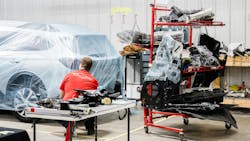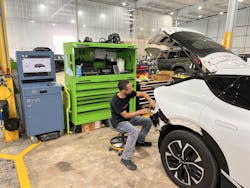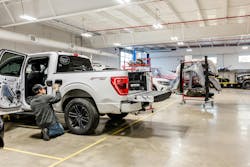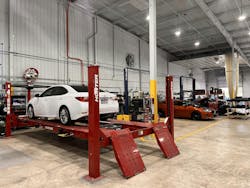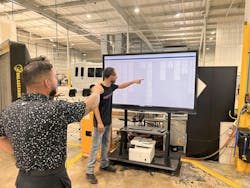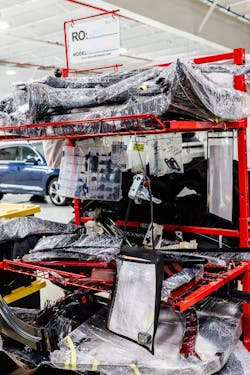Key Highlights
- Implement detailed check-in and blueprinting processes to reduce mistakes and improve repair speed.
- Focus on building employee expertise through specialization and apprenticeship programs to enhance consistency and retention.
- Leverage digital tools and software to manage workflows, ensure repair accuracy, and track progress efficiently.
- Develop strategies to minimize insurer involvement, such as upfront customer agreements and certified repairs, to reduce delays and supplements.
- Adopt a comprehensive approach that combines process standardization, workforce development, and technology to boost profitability and operational efficiency.
There’s a telling irony in the fact that building efficient operations isn’t typically an efficient process. Strictly speaking, business efficiency is an organization’s ability to use resources such as time, labor, and materials to produce maximum output (in terms of services and revenue) with minimal cost and waste. It measures how well a business transforms inputs into profits by streamlining processes, reducing redundancies, and optimizing operations to boost productivity and profitability. That all is easily comprehensible, but turning it into an actual operation is the trick, especially if you’re a collision repair operator already fully invested in just turning a profit and surviving. Moreover, there’s no one model (or even a limited number) that shops can turn to. This leaves most operators tweaking efficiencies where they can instead of implementing a true efficiency vision where they could reap the most benefits.
Fortunately, there are solutions available to bring a true vision to life. Help abounds with consultants who can assist you with your business. You can also look at other shops and how they’re turning new approaches to efficiency into lessons that every shop can learn from. Here’s a look at two such shops — Central Florida Paint & Body in Orlando and Wallace Collision Center in Bristol, Tennessee — along with five steps that can guide you into sharing their fresh approach to efficiency.
A word about lean
No idea dominated the collision repair industry during the first 20 years of the new millennium more than lean processing. With insurers holding sway over shop profits with no relief in sight, shop owners turned to lean processing to cut waste and return these lost dollars to their own pockets. Operators invested heavily in rethinking the streamlining of their work and reducing, sometimes only by minutes, the time taken to perform various tasks. More available time was supposed to translate into more throughput. Couple that with reclaimed costs and waste, and shops had a surefire path for success. Except it wasn’t that easy. Overhauling a business into a lean operation could be more than some shops and their employees would accept. Some repairers even began pushing back against lean changes they believed offered little or no return on the investment. No, lean isn’t dead, and in fact, far from it. But shops can focus on other areas of efficiency.
Step 1: Focus on process consistency.
Streamlining your processes is a big part of lean, but both Central Florida Paint & Body and Wallace Collision Center have their own take. Both aim to reduce mistakes and speed repair times with measures that ensure all damage is diagnosed initially and OEM repair procedures are always strictly adhered to.
At Central Florida, Managing Partner Nader Akbari explains his shop utilizes a detailed vehicle check-in process outlined as a key to efficiency. Steps include full photogrammetry, decontamination (silicone-based power wash), a thermal interior wash with protectant, followed by diagnostic and factory scans, and suspension measurement to ensure there is no missed damage or other issues that can cause problems downstream. “We want the vehicle touched as little as possible, so we don’t have big problems like re-dos that really hurt efficiency,” he explains. With that done, blueprinting and then repairs can begin.
Wallace employs similar prep and blueprinting processes, although it separates its work into two sets of certified repairs. The first set is certified work on popular models like Ford and Subaru and the second is on luxury lines. “It’s almost like a business-within-a-business structure,” explains Director of Operations John Baker. Further, he notes that repairs are segmented, with designated teams or employees focused on specific repairs. With the shop’s staff dialed into consistent work processes, costly mistakes can be drastically reduced if not eliminated altogether.
Step 2: Build on experience.
Baker says this setup offers further efficiency. Since employees are focused on performing specific work on specific vehicle makes, they become accustomed to the work. They aren’t left having to navigate and train on a number of vehicle makes. Ease of repair through familiarity is built into the operation.
This approach has allowed Wallace to bring in work it once outsourced, such as glasswork. To make this operational model work, the shop puts employees in positions where they best fit (based upon factors such as training and evaluation). While other repairers look for ways to cross-train workers so they can share resources on jobs, Wallace has found that by doubling down on simplicity and consistency, they can reap more benefits. On a side note, the shop employs a safety inspection tech to evaluate all work. At one time, several employees shared this duty. Baker says the business eventually decided to use one dedicated employee to, again, ensure consistency. Even a single role has an important place in a business built on consistency.
Step 3: Invest in your workforce.
Of course, such an operation relies heavily on a trained workforce that remains in place, a true luxury in an industry where many techs move from shop to shop. Wallace has addressed the situation with an apprenticeship program for which it can draw its own labor pool. The shop works with nearby vocational and tech schools to identify high-performing students and then puts them to work on a blueprinting team to see if they’re right for the shop and if they want to do the work. Currently, four apprentices are working as flat-rate technicians.
Baker points out that his shop’s focus on certification work also has a part in employee retention. “A lot of techs have never really traveled,” he says. “We give them the chance to go somewhere they haven’t visited and stay while they train. It’s a big deal to them.”
Step 4: Use the available tools.
Managing operations based on top-tier consistency is no easy matter. Central Florida makes full use of its 45,000 square feet. Both it and Wallace use a variety of digital tools to manage workflows and ensure accurate OEM repair steps are delivered.
Central Florida makes use of production boards displayed on a large touch screen TV, cloud-based software, RepairLogic for accessing OEM procedures, and a new app they are helping test, Carmic, that documents repairs and uses artificial intelligence to help technicians quickly search through repair procedures using voice commands.
Wallace uses Rome collision management software, which Baker says tracks how many repair orders an estimator or tech is handling, and features a big board showing where a vehicle is in the repair process and who’s working on it.
Both shops note the importance of leveraging technology to ensure consistency and repair accuracy. Technology is at the core of their ability to maintain their processes.
Step 5: Remove insurers from the equation.
One of the final, if not main, keys for shops to institute far-ranging efficiency practices is by taking full control of their businesses. This can be nearly impossible with insurers making their own demands, including approvals for work and supplements. Central Florida and Wallace have both responded to this problem by keeping insurers at bay. Wallace is not a part of any DRP, preferring instead to found its operations on certified repairs. Central Florida has its own unique take.
Akbari says the business begins working with customers immediately to clarify what work they will be responsible for. This eliminates the need to negotiate for work permission during the repair. “This is something a lot of shops should and could be doing,” he says. “Shops shouldn’t be afraid to have these conversations with customers or insurers. It really cuts down on any possible interruptions with the work.”
He continues. “You have to do your work the way you want. You can’t have 23 different processes because you work with that many insurers.”
What’s more, the actions Central Florida and Wallace take to eliminate mistakes similarly reduce supplements and other issues. “It’s not uncommon to see prolonged back-and-forth with insurance companies over supplements, with some shops doing five to seven supplements on a single job,” Akbari says. “It’s also not uncommon to have cars sit for 20 to 30 days while shops wait for permission for work. That’s no way to work and be efficient.”
The two shops have used these approaches to significantly improve shop metrics, most notably repair hours. With dedicated efforts up front and processes built on consistency, more time can be dedicated to repair hours that are compensated.
Says Baker, “Over the last few years, we’ve seen increased sales and labor hours while the number of cars we repair has dropped.” That might be the very definition of collision shop efficiency in 2025. With the right processes and a fresh approach, you no longer have to scramble to get more work through your doors and search for new ways to streamline. Plan to perform the safest, highest quality repair possible, and the money will be there.
About the Author
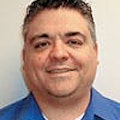
Tim Sramcik
Tim Sramcik began writing for ABRN over 20 years ago. He has produced numerous news, technical and feature articles covering virtually every aspect of the collision repair market. In 2004, the American Society of Business Publication Editors recognized his work with two awards. Sramcik also has written extensively for Motor Age and Aftermarket Business World. Connect with Sramcik on LinkedIn and see more of his work on Muck Rack.
